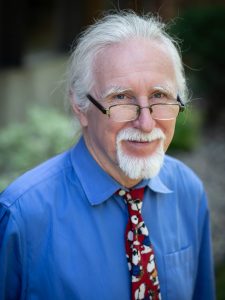 By Bob Hulteen
By Bob Hulteen
In Minnesota Prince may be royalty, but in the Lutheran church the bishop is … Hmm, what is the bishop? (I’ll start an answer below.)
The 2023 Minneapolis Area Synod Assembly just concluded a day or so ago. The Rev. Dr. Otis Moss III lit up the room with his inspiring oratory, using scripture to challenge us to be healers of the breach for those who are in (literal) bondage. We debated, sometimes contentiously, real-world issues that confront us civil and ecclesial beings. We expressed concern over a budget that appears to be in a slow-burning decline. And, we ate some great food from Afro Deli, whose owner, Abdirahman Kahin, was just yesterday named national Small Business Owner of the Year.
“The election of a bishop is a call process.”
In her report to the assembly, Bishop Ann Svennungsen mentioned two important things to remember about the upcoming year:
- Her term comes to an end next year, so we will be working on the election of a new bishop at next year’s assembly, which will be held May 2-4. (The MAS Constitution limits a bishop to two full terms.)
- She still has goals to accomplish and responsibilities to carry out; she isn’t done yet. (Or, as she said in her best Monty Python voice, “I’m not dead yet.”)
I’ll let her say more about her goals for the next year in her upcoming blogs. But, it is good for us all to get on the same page when it comes to the duties of the bishop and the process for the election.
WHAT DOES A bishop do? What is a bishop called to do? What are her responsibilities?
Well, the Synod Constitution in S8.10 (page 21) delineates some important details about the election and role of a bishop, including the many and varied gifts and skills desired/required. A pre-requisite to being bishop, of course, is being a Minister of Word and Sacrament in the ELCA. And, the bishop of a synod is elected by the voting members at the synod assembly.
Below is just a smattering of the responsibilities (enough to make anyone reconsider wanting to accept the call to be bishop):
- Preach, teach, and administer the sacraments
- Have primary responsibility for the ministry of Word and Sacrament in synod congregations
- Providing pastoral care to pastors and deacons
- Power to ordain approved candidates
- Attest letters of call for persons called to serve congregations
- Install or designate someone else to install rostered ministers
- Interpret and advocate the mission and theology of the whole church
- Submit a report to the synod assembly about the synod’s life and work
- Advise and counsel synod-related organizations and institutions
- Administer processes for the resolution of controversies and the disciple of rostered leaders or congregations of the synod
- Serve as chief ecumenical officer of the synod
- Consult with other synodical bishops
- Foster awareness of the global Lutheran church
- Serve as president of the synod corporation
- Ensure adherence to the constitution and bylaws of the synod
- Supervise the work of the synod’s officers and staff
- Be a member of each synod committee
- Maintain synodical rosters, including informing the synod council of rostered leaders on leave from call
- Maintain records for Churchwide by informing the secretary of the ELCA about roster changes
- Provide a register of the congregations of the synod and maintain a list of lay leaders
Whew!
What do voting members (rostered and lay) need to keep in mind when thinking about a new bishop? Well, it is a call process, so the types of questions that come up when calling a pastor would also be legitimate in thinking about a bishop. What balance of skills, gifts, and interests are needed for the synod now? How do pastoral care, public engagement, theological agility, ecclesial familiarity, and administrative sensitivity fit together to meet the needs of the moment?
WHAT’S THE PROCESS for electing a bishop? Again, the Synod Constitution lays out a number of details, broadly in Section S9 (page 29), and with great specificity in Section S9.04.02 (page 31). The Synod Council will elect a Bishop Election Committee (BEC) consisting of seven members (though there is precedence for including two alternates) at its first meeting after the synod assembly previous to the election. The BEC oversees the entire nomination and election process, working in conjunction with the vice president and assembly planning committees.
The BEC prepares informational materials about the synod and the election process to be distributed to voting members of the synod at least 90 days prior to the synod assembly.
“In addition to pre-nominations by conference, there will also be a nominating ballot at synod assembly wherein other names may be added at that point.”
Each of the 12 conferences of the Minneapolis Area Synod can pre-nominate three persons at their conference assembles (that are held at least 60 days before the assembly). The vice president of the synod contacts each person nominated to determine willingness to be considered. Each candidate will provide background material that will be sent to assembly voting members 30 days before the assembly.
And, with a nod toward the last-minute machinations of the Holy Spirit, there will also be a nominating ballot at synod assembly wherein other names may be added at that point. The BEC will provide a nominations form and a process for nomination; it must include prior contact between the nominator and the nominee to ensure interest. The BEC will also follow the process provided in the Constitution concerning the election weekend itself, including informing voting members about the number of nominees on each ballot and the threshold required for an election.
IN ADDITION TO THE process of the election, the current bishop and leadership of the synod must ensure that there are sufficient funds for the transition; a plan for overlap with the current bishop; a process for hiring new staff; and opportunities for the bishop-elect to meet colleagues, ecumenical and interfaith leaders, institutional partners, and current synod council members.
The ELCA Conference of Bishops has recently written “Transition Guidelines for the Election of a Synod Bishop” to aid in planning prior to the election and in preparing the transfer of leadership duties and responsibilities. It suggests forming a transition team, much like a congregation might do between pastors. It addresses administrative concerns and staffing suggestions. It also encourages the previous bishop to clear up existing conflicts and misconduct issues before leaving the Office of the Bishop.
Well, that’s a lot of detail. So, let’s close with a joke: A bishop walks into a bar and she walks straight up to the bartender who shouts, “Hey! You can’t do that. Bishops can only move diagonally!” Maybe the most important thing is that we do move.
